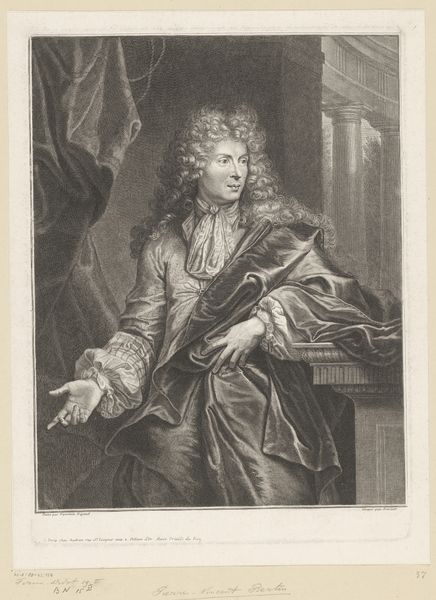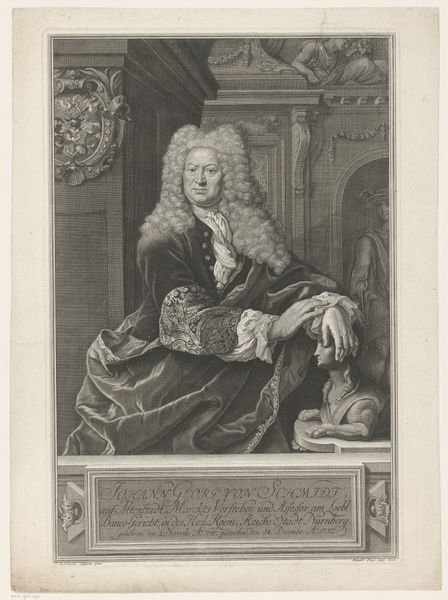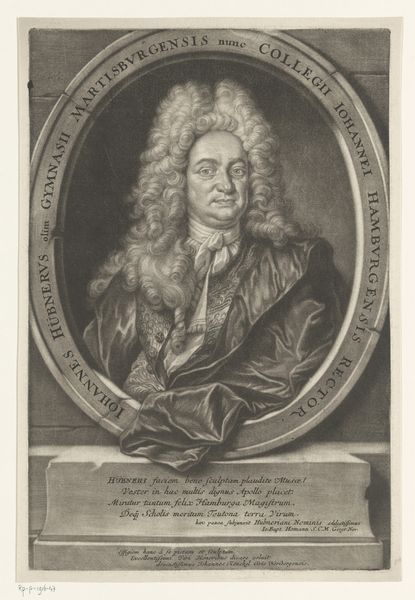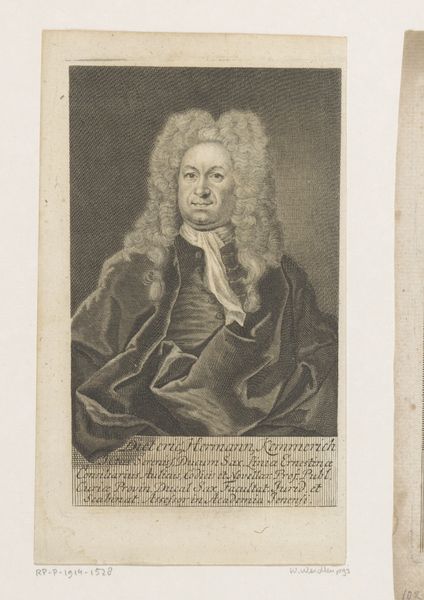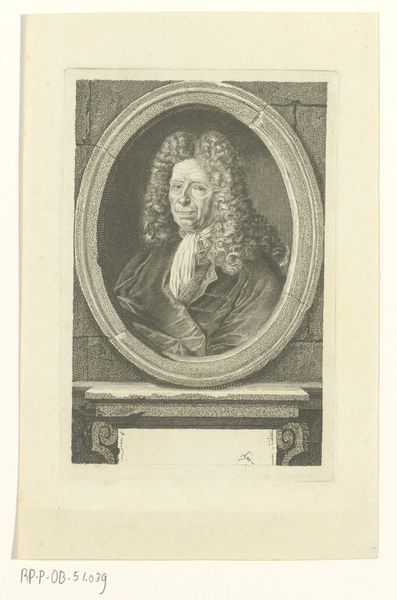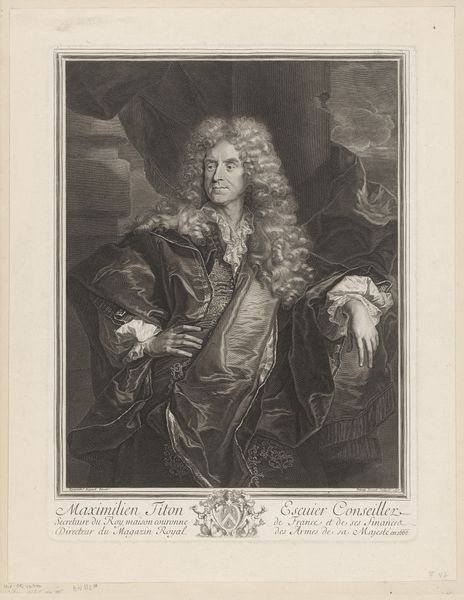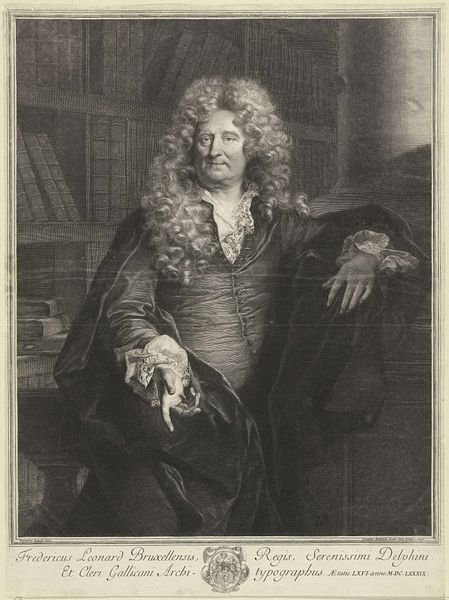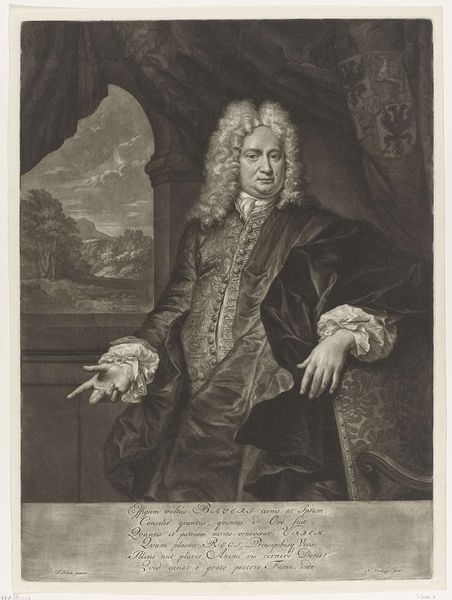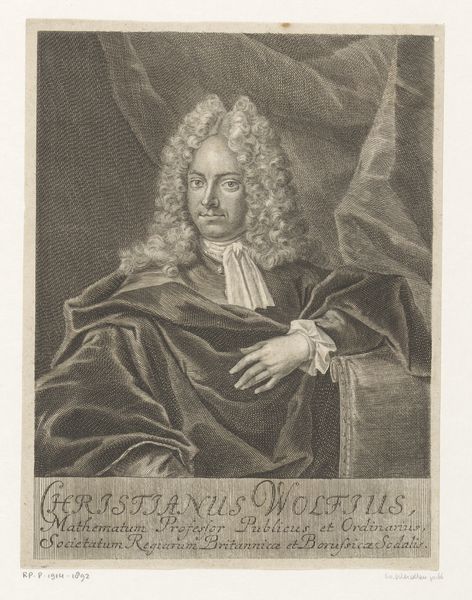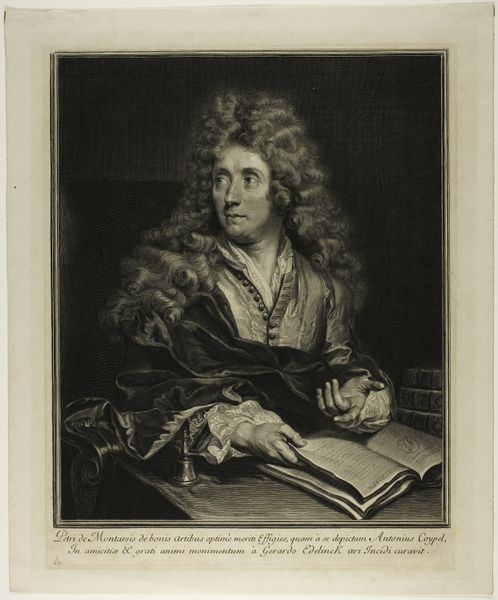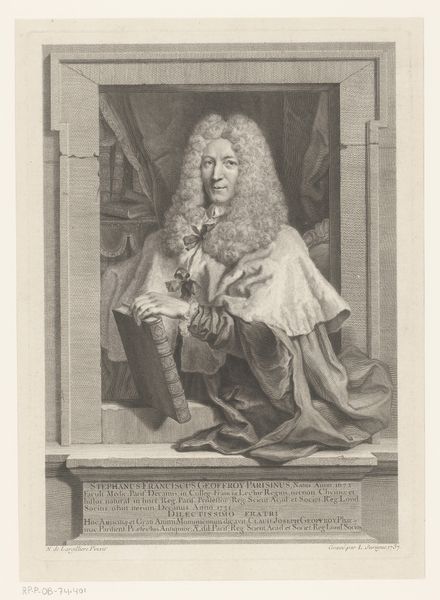
print, engraving
#
portrait
#
baroque
# print
#
old engraving style
#
engraving
Dimensions: height 315 mm, width 185 mm
Copyright: Rijks Museum: Open Domain
Editor: So, this is "Portret van Johann Dolaeus," an engraving by Andreas Matthäus Wolfgang, created sometime between 1670 and 1737. What strikes me is the meticulous detail in the rendering of his hair and clothing; it really captures the eye. What aspects of the artwork grab your attention? Curator: The immediate impression stems from the dialectic between the subject and the space. Observe the texture. The subject, rendered in swirling lines, clashes with the orthogonal precision of the bookshelf. Consider the semiotic tension; it communicates knowledge versus ornamentation. Editor: I hadn’t thought about it that way, seeing a contrast, not just detail. Is the positioning, slightly off-center, intentional? Curator: Undoubtedly. Note the asymmetry generated by the arm resting on the unseen ledge. The formal imbalance directs our gaze and suggests an active, rather than static, presence. Do you see the philosophical implications of Baroque style conveyed here? Editor: Not really. The… Baroque-ness just screams, like, flamboyant wigs to me. Curator: But what is the essence of 'flamboyant'? Consider how the cascading lines in the wig are echoes of the lines forming folds of the robe. What could those interwoven shapes represent? Editor: Maybe the wig *isn't* just a fashion statement. The likeness and style seem interwoven... The artwork shows much thought was given to portraying Dolaeus in a way that highlights learning. Curator: Precisely. Now the structure reveals a deeper conceptual framework. Editor: It's helpful to see this more technically. This piece presents more than meets the eye if one considers all details. Curator: Indeed. An appreciation for details and composition enhances how the image reveals and communicates deeper, historical meaning.
Comments
No comments
Be the first to comment and join the conversation on the ultimate creative platform.
